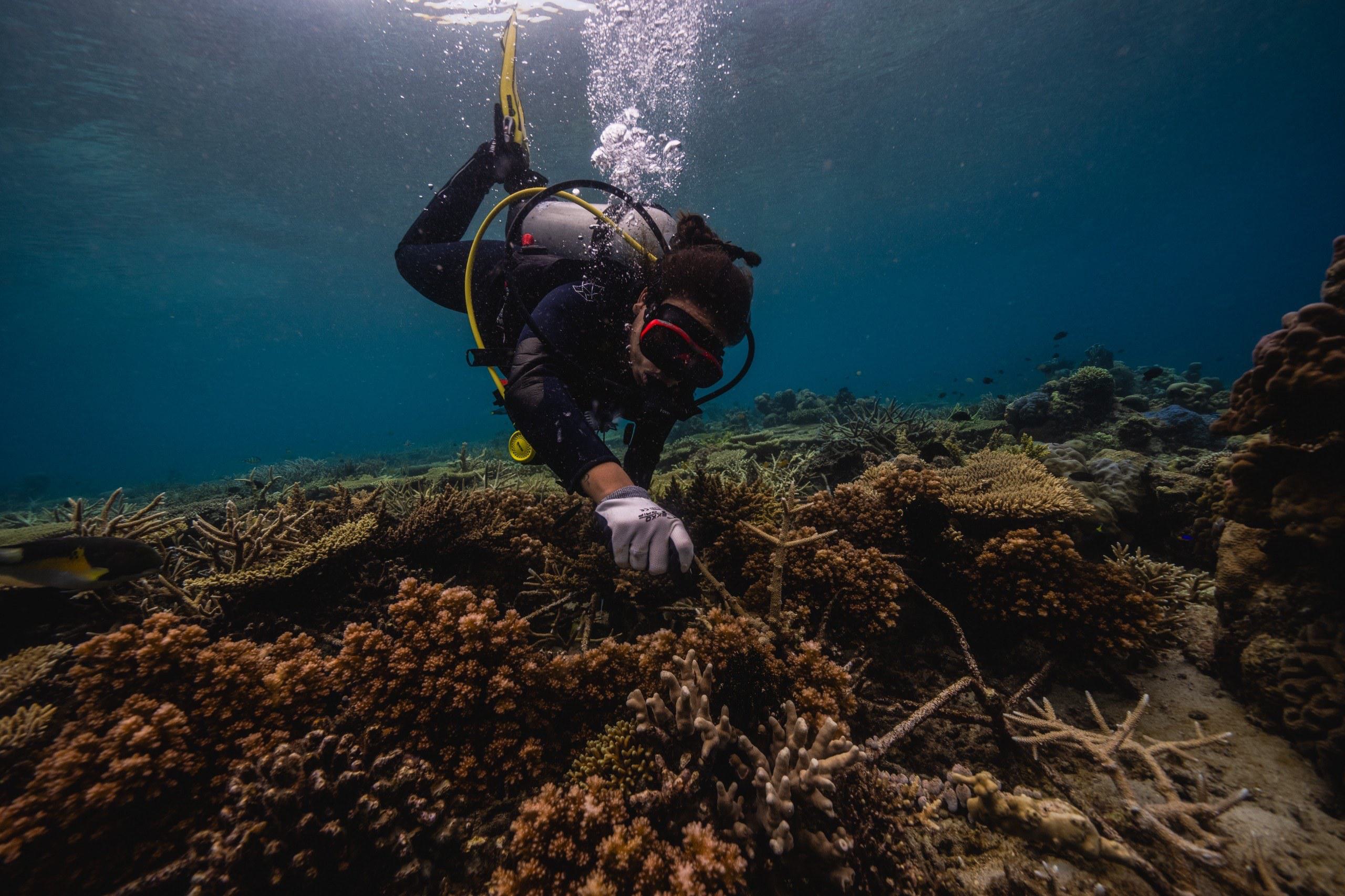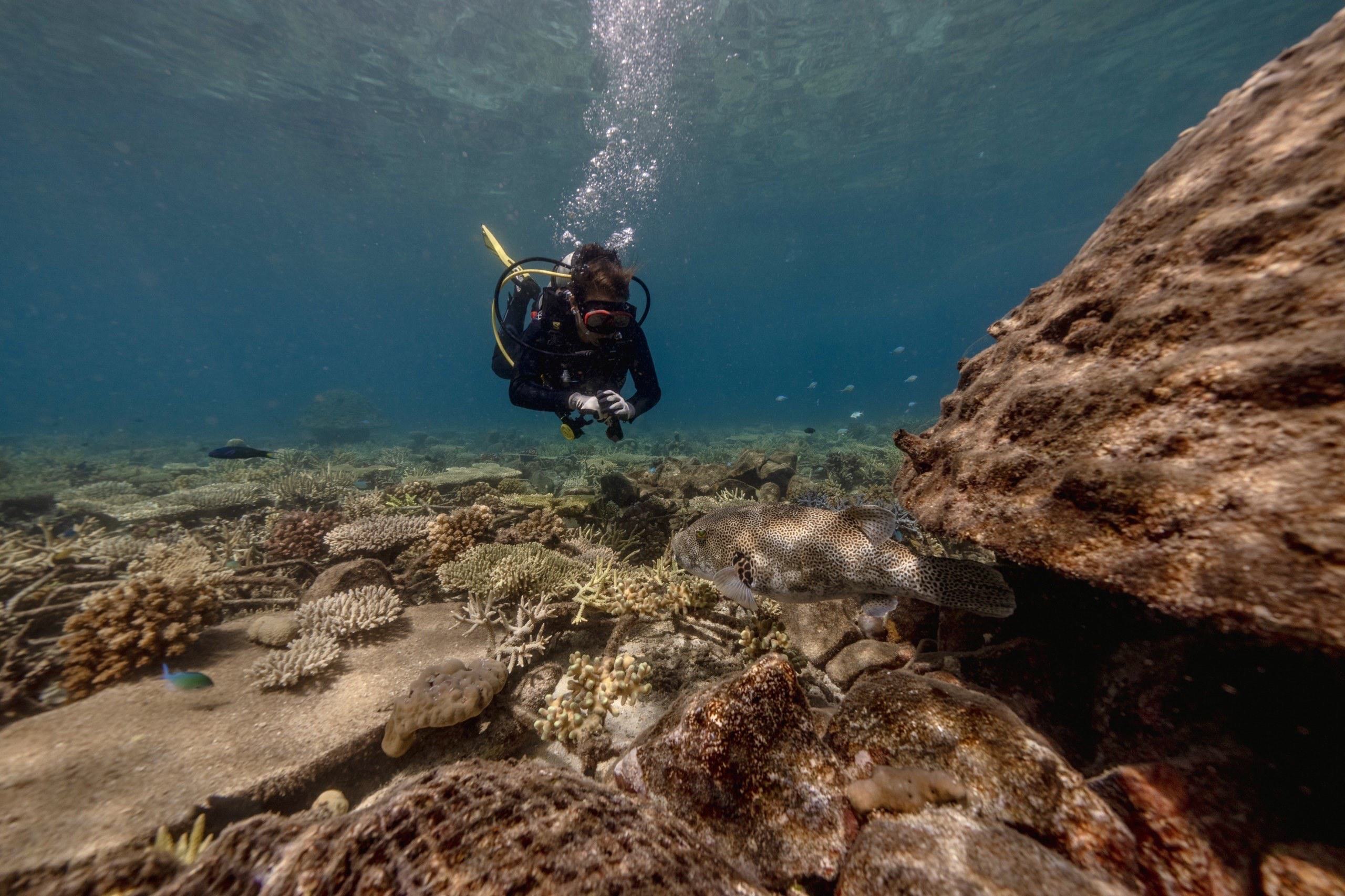
Indonesian youth environmental advocates visit Sheba Hope Reef
"As the daughter of a local fisherman and surfer, I am hopeful that we can can restore the reefs that we have lost and protect more from damage, but I have yet to come across a project that has truly given me the sense of safety and such reassurance. This was until I went to the SHEBA Hope Reef, located in Bontosua Island, Sulawesi, in my home country Indonesia."
As Indonesian youth environmental advocates, we are constantly educating Indonesian communities around us on climate change and the ways it will soon affect them, their kids, their grandkids, who may yet to be born; with the hopes of encouraging changes in lifestyle. I’ve spoken to kids, teenagers, adults, elderly citizens, on a variety of topics; from the effects of plastic to overfishing to pollution. However, a part of me will always envy the general population who are unaware and get to live their life without the climate anxiety and overwhelming responsibility I feel. I have worked with a multitude of NGOs, initiatives, projects and organisations; all with different individuals' visions and mission, but with one overall consistent goal of protecting future generations from climate change. They have all been hopeful, inspiring, leading us down the right path, but I have yet to come across a project that has truly given me the sense of safety and such reassurance, that perhaps we can restore what we have lost and protect more from damage. This was until I went to the SHEBA Hope Reef, located in Bontosua Island, Sulawesi, in my home country Indonesia.

Emma Batty Sukerta diving on Sheba Hope Reef
As the daughter of a local fisherman and surfer, my father Wayan, and a teacher in the big city of Jakarta, my mother Jill, I grew up learning about the power my voice has in a conversation. I started my activism when I was about 15, as a volunteer and passionate debater. That grew to becoming a public speaker, leading projects, partnering with incredible NGOs, and eventually becoming a professional divemaster, eventually focusing my work on ocean conservation. I have collaborated and seen coral restoration projects around several different areas in Indonesia, from Bali to the Gili islands, all the way to Anambas Islands in Riau. As a result, my trip to Hope Reef was evidently more shocking than I expected. I have known about the SHEBA Hope Grows Program through their social media for about a year now. I learned that they were one of the biggest coral restoration programs in the world, that they had the infamous HOPE word created out of restored coral. However, it wasn’t until I got there did I realise the significance and scale of this project.
I don’t believe that you can truly grasp the size of +30,000 restoration frames and over 450,000 coral fragments transplanted until you witness it with your own eyes. It felt like a never ending reef, that went on for miles and miles. I wasn’t aware that the HOPE created out of frames itself was just a small portion of the whole restoration site. I soon learned about how, at Pulau Bontosua, the MSS Indonesia team has two main sites, science blocks and the newer restoration areas. I was particularly interested in the methods of maintenance and monitoring, how they split work between the two. The project itself is so large that they have separate teams for maintenance and monitoring. The maintenance team dive about 2-3 times a week, for long hours, transplanting, scrubbing, and snipping dead fragments in the newer restoration sites, until the resident fish population can take over the job. Whereas the monitoring team uses the science block to collect data on the growth rate and success of older restoration frames that date back to 2017. I myself did not want to just explore the reef, film and photograph it, but I wanted to participate, and help with maintenance. The MARS team carefully chooses sites around the world where restoration is both necessary and an appropriate solution; they work with local communities to establish sustainable programmes; and monitor our restored reefs regularly to ensure positive whole-ecosystem impact. The full whole approach is called the Mars Assisted Reef Restoration System - MARRS, a holistic approach to reef restoration. At the centre of the MARRS is a hexagonal structure that we call a Reef Star.
I have seen reef stars that have been used in Gili and Padang Bai, however, I soon learned, through a conversation with Noel Janetski, the Senior Technical Advisor for the MARS global coral reef restoration program, about all the different methods and highly advanced restoration that was being conducted. In contrast to the restoration that I am used to participating in, the MARRS method involves an incredible amount of innovation. I learned that the reef stars were the base and the foundation of the restoration site; a solution which came after long trial and error of different restoration methods. However, on top of this came new ideas to restoration that worked towards their goals; habitat complexity, vertical complexity, coral diversity, flexibility of method, species diversity, creating seascapes, increasing efficiency and increasing sustainability. I learned about: coral castle and flowers, which are placed on top of the reef starts, saddles, that connect the frames together, coral star domes, which are huge blocks of cement that create vertical diversity, coral glue, which can be used with micro fragmentation to restore massive corals, coral nails, which can allow fragment to grow on rock without glueing it but merely attaching with to a clip that is nailed into the rock, and more.
The MARRS method is a leading program, not only because of the size and amount of restorationthey have done; but for the steps they have walked with innovation that allowed other projects to run. The overall fact that after 2-3 years of maintenance, a reef can survive on its own is a very clear message that the MARRS method is a success. Its success can be measured through different variable, eg. the dependency on maintenance, the fish diversity, the coral diversity, the rate of growth etc. And what I have found is that, there are many successful coral restoration projects around the world, which is incredible, but the rate of success of the MARRS methods far exceeds other projects. The diversity of coral that is transplanted, was the most shocking part for me. Branching coral, like Acropora, was only a fraction, not the main character, of the corals restored. I saw isopora, pocillopora, seriatopora, montipora, fire coral, and the biggest shock for me, hundred and hundreds of restored table coral. My excitement and hope for coral restoration shot through the roof. I don’t think I have ever been so amazed at a conservation project in my life.

My favourite part of visiting Hope Reef was meeting the team. The commitment and work ethic of this team is overall so genuine and uplifting. I felt so welcomed and could physically feel the passion and drive from each individual involved. The best part? I met a fully Indonesian research team, led by the kindest, most motivating female Indonesian, Lily. I was invited to their meetings after the dive, I talked to them around the dinner table and bonded over the love for coral and Indonesia. As a young Indonesian female, with a large background of feminist and environmental advocacy, this aspect of the project is one I want to share with my communities back at home. The work flow and team collaboration made me want to be a part of the project. You can just sense how much passion they all have for the project and the overwhelming effort each individual gives to their role. I aspire to one day be a part of a team as supportive and uplifting.
Overall, what I brought home with me was more than just knowledge on how to better do my own coral restoration, but an incredible amount of excitement and hope.
Made Emma Batty Sukerta

